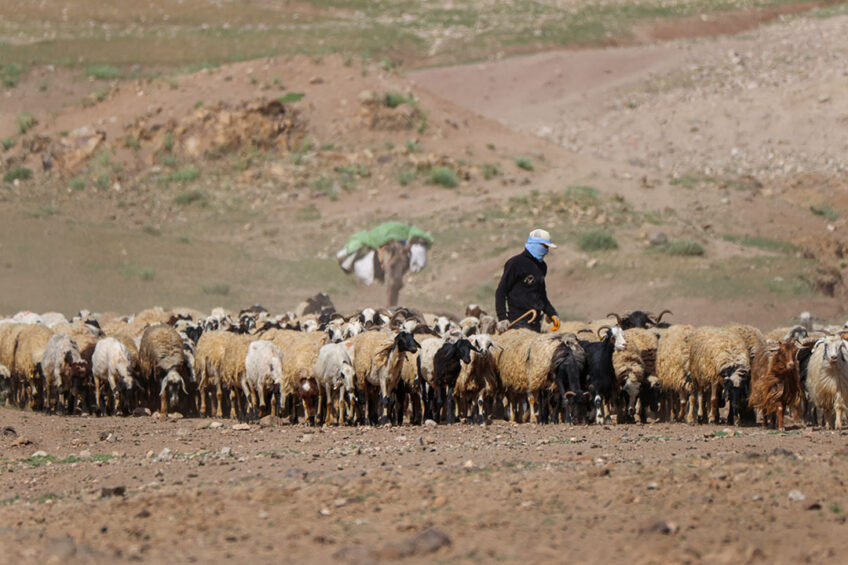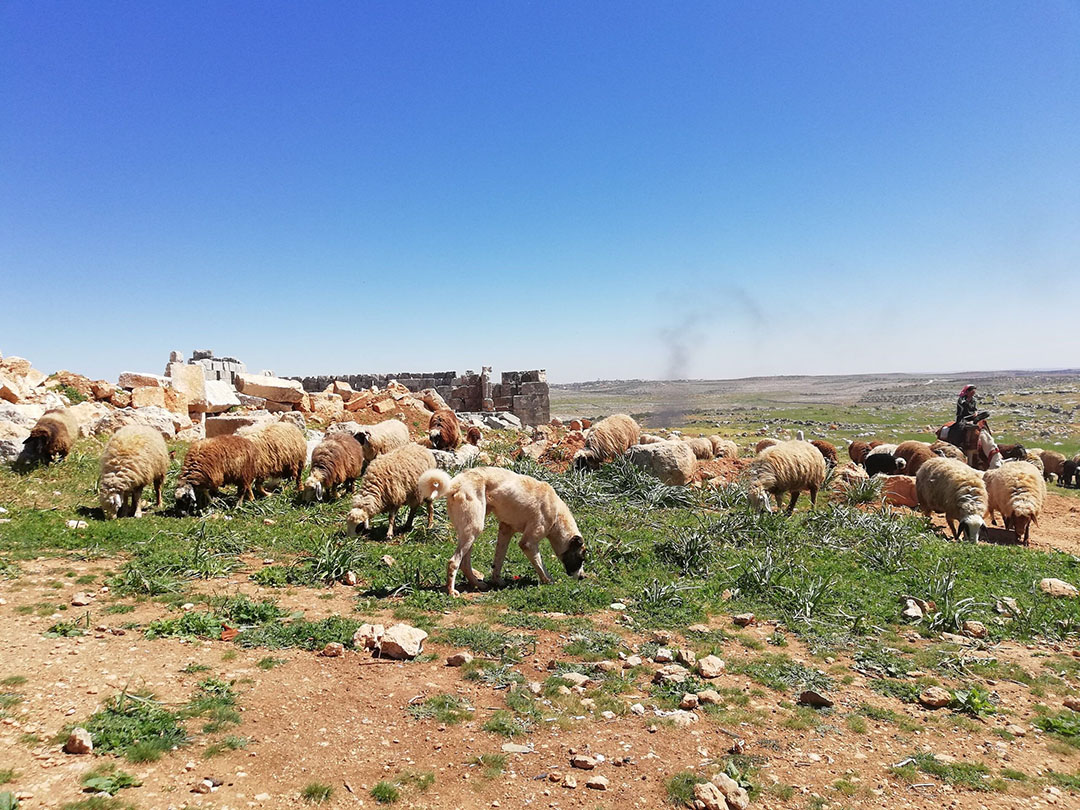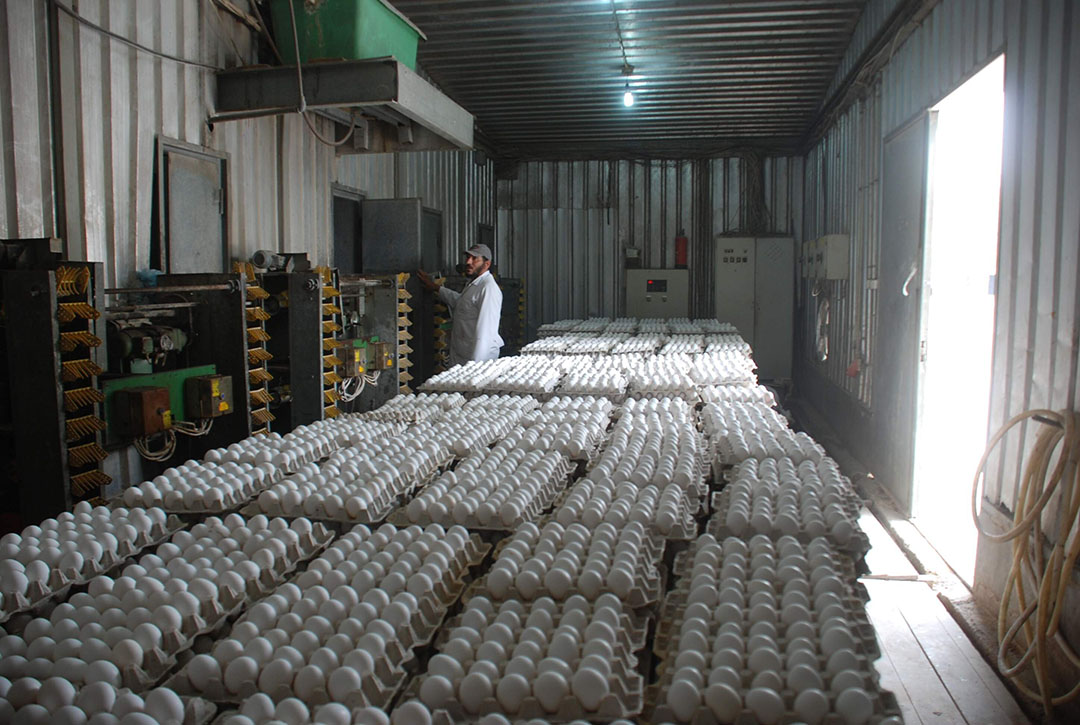Drying sands of North Africa

Although global shock waves in the past few years have taken a heavy toll on the food supply chain in the countries of North Africa (the Maghreb), those challenges can hardly be compared with the repercussions of the catastrophic water scarcity that lies ahead.
The Middle East and North Africa (MENA), was already one of the most food insecure regions in the world even before the turbulence of the past several years unravelled, Marianne Grosclaude, World Bank Agriculture and Food Practice Manager for Middle East and North Africa commented.
The prevalence of moderate or severe food insecurity in this area of the world was as high as 30% in 2020 – the onset of the COVID-19 pandemic, and it has only increased since, Grosclaude stated. There are many reasons for food insecurity, but water and land scarcity, compounded by environmental degradation, is believed to be the key, Grosclaude admitted. “The region is highly dependent on food imports and, as such, will face fluctuating food prices with negative socio-economic consequences,” Grosclaude said.
Imports help feed industries in the Maghreb to cover nearly half of their needs in terms of raw materials. For example, Egyptian aggregate 2023 cereal production was estimated at 24 million tonnes, according to the FAO. In the 2023/24 marketing year, total cereal import requirements are forecast to be 20 million tonnes. And, in other countries in the region, the ratio is similar.
Wars in Ukraine and Sudan create ripple effect
Due to its high dependence on imports, North Africa has been severely affected by the armed conflicts in exporting countries in the past couple of years.
Impact on Egypt
“The ongoing wars in Sudan and Ukraine have created a ripple effect on Egypt’s food security,” commented Dr Mahmoud Riyad, secretary general of the Egyptian Milling Association. “As a country that relies heavily on food imports, Egypt has been impacted by the disruption in global food supply chains caused by these conflicts. The instability in these countries has led to a decline in food production, resulting in a decrease in the availability of food for export,” Dr Riyad said.
…a drop in the availability of animal feed, which has impacted the livestock industry in Egypt…
Sudan, for example, is a major exporter of livestock and grain to Egypt, but the ongoing conflict is expected to reduce the production and export of these commodities, Dr Riyad indicated. Similarly, the conflict in Ukraine has resulted in a decrease in the export of maize, wheat and other grains to Egypt. “This has led to a drop in the availability of animal feed, which has impacted the livestock industry in Egypt, resulting in a decrease in the availability of meat and dairy products,” Dr Riyad claimed.
Long-lasting effects
Similar to Egypt, commodity dependence is one of the 2 key challenges the Tunisian feed industry faces, agreed Khalil Ben Salah, president of the Tunisian Feed Mill Union. The second is climate change.
Increases in food prices, even if temporary, can have long-lasting effects that can span generations
According to the World Bank, supply chain turbulence has translated into rabid inflation that had a detrimental effect on food consumption. “Egypt and Lebanon are experiencing some of the highest real food inflation rates year on year globally, at 27% and 15%, respectively according to Grosclaude. “Multiple shocks affecting the region are likely to contribute to persistent food insecurity in the near to medium-term. Increases in food prices, even if temporary, can have long-lasting effects that can span generations,” Grosclaude added.
A slump in Ukrainian grain exports, including through the destruction of agricultural land and facilities and the partial blockage of export routes, has curtailed an essential source of grain supply for North Africa, Grosclaude said.

Escalation of conflict in Middle East
What’s more, the food supply issue may still deteriorate further, as the Israeli military operation in Gaza looks like a powder keg ready to explode. “An escalation of the conflict in the Middle East, and the associated disruptions in energy supply and the ensuing surge in energy prices, could also substantially exacerbate food insecurity [in North Africa] by raising food production costs,” Grosclaude warned.
Industry rings an alarm bell
Dependence on feedstuff imports, which was the key reason for the supply chain turbulence since 2022, can become even tougher as the region is braced for a full-fledged water shortage.
By 2030, North Africa, along with the Middle East, will fall below the absolute water scarcity threshold of 500 cubic metres per person per year. “In view of the climatic changes and the drought observed in recent years, this is a real problem that the Tunisian feed industry needs to deal with urgently,” Salah claimed.
Persistent drought
Tunisia, along with neighbouring Morocco, has been struggling with persistent drought for years. It has turned to water rationing, which includes not only limiting household and banning car washing, but also restricting farm irrigation. The Tunisian authorities are aware of this problem and wish to tackle it by further managing water rationalisation and moving towards crops that consume less water, according to Salah.
Dwindling Nile water supply
In Egypt, the Nile Delta is currently just about a meter above sea level, which means that if a mere half-meter rise in the sea level were to occur, the delta region would shrink by 19%, Dr Ryad said, citing studies on this issue. This contraction would impact 63% of Egypt’s agricultural yield. Needless to say, the impact is going to be catastrophic. “We believe that it is necessary to move towards more independence by developing certain crops, especially for ruminants,” Salah indicated. that Egypt is already experiencing a rising water deficit due to wasteful water irrigation and consumption, global warming and rapid population growth, Dr Ryad said. “The Egyptian population is increasing at an annual rate of 2%, creating rising demand on the already dwindling Nile water supply,” Dr Ryad indicated.
Grand Ethiopian Renaissance Dam: Risks
Climate change is not the only threat to the water supply in the Maghreb region. According to Dr Ryad, big risks come from the Grand Ethiopian Renaissance Dam (GERD). The dam is a massive project intended to store water and generate electricity for Ethiopia. However, this dam endangers the water supply of downstream North African countries. “As the most downstream country, Egypt is among the most affected by the impending threats of the dam, as the GERD can potentially curtail the Nile’s water flow coming to Egypt by 25%. This percentage will not only jeopardise Egypt’s water security, but also its agricultural industry,” Dr Ryad warned.
Challenges of purifying sea and wastewater
Facing a nearly existential threat, North African countries are turning to building an array of plants designed to purify sea and wastewater. However, there are several downsides to this approach.
- Most of the existing water desalination plants run on fossil fuels, which means their operation speeds up climate change.
- Environmentalists voice fears about the impact on marine life as plants dump the extracted salt back into the sea as concentrated sludge.
- The desalination plants could make a difference for the coastal regions but hardly for the farmers located at some distance from the sea.
Trade liberalisation is the first step
A combination of measures is needed to help countries and societies mitigate the risks and adapt to climate change, to lessen the impact of higher food prices and to protect the most vulnerable groups, Grosclaude said.
First, increasing trade in food and fertilisers can bring immense benefits in terms of food security for the region. “Taking advantage of some of MENA’s trade potential in phosphate and potash fertilisers, and pairing that with its import food requirements, can unleash mutually beneficial trade opportunities between exporters and importers of both commodity groups,” Grosclaude said.
In addition, removing some of the regulatory obstacles within the region itself can unleash new trade opportunities. Grosclaude indicated that fresh and processed food is an example of a sector with significant unexploited growth and trade potential for the MENA region. Much of this is for trade within the region itself. Yet, the MENA region imposes, on average, the largest number of technical regulations on fresh and processed food imports – nearly four times more than other regions.
“Reforming regulations that restrict foreign investment in various agri-food industries or land ownership, among other measures, could significantly improve EU-MENA trade and economic relationships,” Grosclaude said.
Trade is also an avenue for reducing some of the growing water constraints, particularly as they affect the agri-food sector. The reduction in agricultural production and other water-consuming activities in water-constrained regions implies a substitution of domestic water consuming goods with imports: in other words, an increase in virtual water imports.
In this context, reinforced cooperation to strengthen the economies of the poorly diversified countries in the MENA region is a prerequisite for developing a virtual water ‘strategy’ that has the potential to more effectively enable them to overcome food insecurity and relieve the pressure on local water resources, Grosclaude indicated.
Better feeding practices needed
Finding their backs against the wall, farmers across Maghreb are looking into better feeding practices to cut their feedstuff needs.
Productivity is low in Egypt’s poultry sector – a backbone of the country’s food industry – and great advances could be made with improvements in management practices, feed efficiency and the adoption of new technology to achieve higher productivity, Dr Ryad stated. He continues: “These include modernising feed manufacturing plants and improving feed rations. Efficiency could increase further with greater private sector adoption of advanced production techniques and management skills.”

Dr Ryad also calls for the substitution of recognised breeds of broilers and egg-layers for Baladi breeds (rural domestic produce), which would reduce the amount of feed per bird and increase the number of broiler cycles per year, improving the off-take rate.
A commercial-breed broiler in Egypt needs about 50 days to reach a live weight of 1.63 kg, consuming 3.8 kilograms of feed, Dr Ryad estimated. In contrast, a Baladi broiler needs 120 days to get to the same weight and consumes 8.1 kg of feed. “Risk-averse farmers prefer to raise Baladi breeds because they are more resistant to heat and diseases than commercial birds, and farmers are ready to pay for extra feed as a premium,” Dr Ryad said, estimating that the broiler off-take rate in Egypt is low compared with other countries but could rise by 20-30%.
These changes are crucial as the Egyptian feed sector is poised for growth, meaning feedstuff consumption is also expected to rise.
The size of the Egyptian feed market is estimated to be US$2.35 billion in 2024 and it is expected to reach US$2.78 billion by 2029, Dr Ryad said, citing a forecast by Mordor Intelligence, an international think tank, with which he agreed.
The feed market is projected to experience brisk development due to a rise in animal-based food product consumption all over Egypt thanks to changes in customer dietary habits (moving towards consuming quality dairy products and meat). Still, the looming environmental challenges described in this article could certainly alter this outlook.











